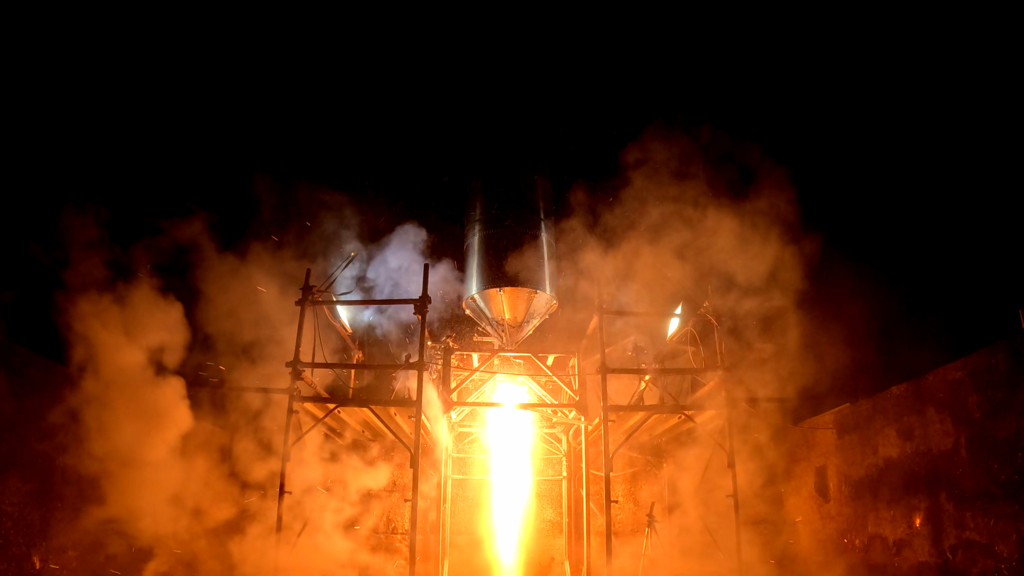
Since our last public update in July 2024, when we completed our first Integrated System Test, we’ve been fully focused on execution. We’ve been pushing our technology forward, refining our models, and deepening key partnerships, because turning vision into reality takes more than just bold ideas; it takes relentless action.
Next Stop: The Low Altitude Flight
Every breakthrough we have made, from digital twin simulations to propulsion system refinements, is leading to a critical milestone. The Low Altitude Flight will serve as a crucial testbed before scaling up to the orbital system flight configuration. This flight will validate core vehicle systems in a real flight environment, ensuring they meet the performance and reliability requirements necessary for orbital operations.
Here is what we have been working on as we prepare for our next major tests:
Institutional and Defense Engagement
We have strengthened our positioning as a key player in strategic space access and rapid-response orbital capabilities, deepening discussions with nine institutional defense actors across Europe and the U.S.
Digital Twin and Vehicle Engineering
The EOS digital twin has been refined for higher fidelity simulations, improving predictive accuracy in real-world conditions.
A new sloshing model, validated through CFD simulations, enhances propellant behavior prediction, ensuring better flight dynamics and propellant efficiency for both the Low Altitude Flight and the next orbital configuration.
Mission Optimization and Trajectory Analysis
ASTOS software validation has been instrumental in cross-verifying our internally developed MATLAB-based trajectory models and mission analysis.
This ensures mission-critical performance and mass requirements are precisely defined and validated, laying the foundation for both the Low Altitude Flight and the Orbital EOS vehicle.
Propulsion Advancements
Refinements in injection, cooling system, propellant flow modeling, turbomachinery and engine actuation have improved system stability and reliability as we prepare for the Low Altitude Flight propulsion tests.
These advancements will be validated in upcoming hot-fire and integrated system tests at our new facility.
New Dedicated Test Site
We have secured a 100,000+ m² test facility, with all necessary authorizations in place.
This site will serve as the primary qualification testbed for propulsion, avionics, and full vehicle testing before flight.
Setup is already underway, creating a controlled environment to push hardware beyond theoretical limits.
EOS and the Path to Orbit
The Low Altitude Flight will be the first real-world test of the key technologies enabling single-stage-to-orbit capabilities.
Ongoing refinements in thrust-to-weight ratio, aerostructures, and propellant handling continue to shape the Low Altitude Flight and the full EOS Orbital vehicle configuration.
The Challenge We’re Solving
EOS is the first truly mobile, single-stage orbital launcher, designed for rapid-response space access with no permanent infrastructure.
– The entire launch system is designed to fit in a standard 40-foot container.
– Rapid Responsive Access to Space.
– Requires no permanent infrastructure.
– Enables unmatched tactical flexibility, deploying femto, pico and nanosatellites and small space assets precisely in SSO and LEO.
At Sidereus, we iterate fast, validate rigorously, and build for real-world results. As we ramp up toward the Low Altitude Flight test, we are ready to bring you along for the journey.
Single-stage-to-orbit is one of the most ambitious challenges in aerospace. Few have attempted it, and the complexities are well understood. The difficulties are real. But progress doesn’t come from avoiding hard problems, it comes from solving them.
With the right design philosophy, fast iteration cycles, and relentless execution, we are turning the impossible into reality. The path to truly responsive space access is being built today.
